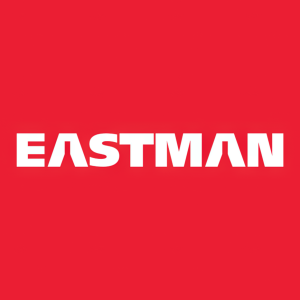Pact Collective’s Colored PET Now Qualified for Eastman Molecular Recycling
Pact Collective and Eastman have announced a significant breakthrough: the qualification of multicolored PET waste for Eastman's methanolysis technology. This innovative process addresses the challenge of recycling multicolored PET waste, which is typically difficult to recycle mechanically due to color variations. Eastman's technology upcycles this material into high-quality copolyesters and PET, suitable for the beauty industry, matching the quality of virgin materials.
The collaboration between Pact, a nonprofit managing beauty packaging take-back programs, and Eastman aims to ensure an environmentally responsible handling of beauty packaging waste. Eastman's methanolysis process breaks down hard-to-recycle PET waste into its basic building blocks, which are then used to create high-performance materials. This initiative seeks to reduce reliance on less sustainable options like waste-to-energy or landfilling, promoting a sustainable future for beauty packaging.
- Eastman's methanolysis technology enables recycling of multicolored PET waste, enhancing sustainability.
- Collaboration with Pact Collective ensures environmentally responsible management of beauty packaging waste.
- High-quality copolyesters and PET produced from recycled materials match the quality of virgin materials.
- Validation of more complex beauty packaging waste streams for molecular recycling is ongoing.
- Reduction in dependency on less sustainable options like waste-to-energy or landfilling.
- The process is currently dependent on the success of validating more complex streams of beauty packaging waste.
- Potential challenges in scaling up the methanolysis technology for broader adoption.
Insights
For investors, the implications are multifaceted. In the short term, this collaboration may enhance Eastman’s reputation as a leader in sustainable materials, possibly attracting eco-conscious consumers and investors. Long-term, the technology could result in cost savings and regulatory advantages as environmental regulations tighten globally. Additionally, the ability to upcycle waste into high-demand materials could open new revenue streams.
While promising, investors should consider the scalability and economic viability of the technology. Methanolysis may require substantial energy and investment, which could impact profit margins. Watching how Eastman manages these costs and scales the process will be crucial.
Rating: 1
From an environmental perspective, this approach could drastically reduce the volume of beauty product packaging waste that ends up in landfills or incinerators. By repurposing waste into valuable materials, the initiative supports a circular economy and minimizes the environmental footprint of beauty products.
Nonetheless, the environmental benefits will depend on the widespread adoption and efficiency of this technology. The energy consumption of the methanolysis process and the lifecycle analysis of the resulting materials should be closely monitored. Investors should be aware of these factors as they can influence the overall sustainability impact of the initiative.
Rating: 1
Breakthrough advances Pact and Eastman collaboration for beauty-to-beauty recycling
KINGSPORT, TN / ACCESSWIRE / May 20, 2024 / Pact Collective and Eastman announce they have qualified the use of clean, multicolor PET waste from Pact members and consumers as feedstock for Eastman's methanolysis technology. This process addresses the challenge of multicolored PET received at material recovery facilities (MRF), which in some instances is unlikely to be mechanically recycled due to color variations. Eastman's methanolysis process enables the upcycling of this material into Eastman Renew materials - high-quality copolyesters and PET for the beauty industry that offer a quality on par with virgin materials.
"Eastman's collaboration with Pact Collective has been a journey of shared vision and commitment. Our combined efforts are ensuring a more sustainable future for the beauty industry," said Tara Cary, Eastman cosmetics packaging segment manager. "By harnessing our methanolysis technology, we are turning challenges into opportunities and leading the way towards a future where beauty packaging waste is a valuable resource, not a burden."
Pact Collective, a nonprofit organization, spearheads the management of beauty packaging take-back programs at retail and consumer levels. These programs play a vital role in ensuring that packaging waste is managed in an environmentally responsible way.
"Pact works to identify the highest and best use for the material we collect through our collection programs, always starting with mechanical recycling when possible. Eastman's technology gives Pact's material that may otherwise be destined for waste-to-energy the opportunity for a better end of life," said Pact Executive Director Carly Snider. "Eastman may even help us keep this plastic material in circulation, creating more post-consumer recycled content that can be used in future beauty packaging."
Eastman's molecular recycling technologies are ideally suited to managing the complex waste collected through these take-back programs. Eastman's methanolysis breaks down hard-to-recycle PET waste to its essential building blocks (monomers) that Eastman uses to create its high-performance materials.
Eastman and Pact are committed to validating more complex streams of beauty packaging waste for Eastman's molecular recycling. This ongoing effort aims to reduce the dependency on less sustainable options like waste-to-energy or landfilling, paving the way for a more sustainable future.
About Eastman
Founded in 1920, Eastman is a global specialty materials company that produces a broad range of products found in items people use every day. With the purpose of enhancing the quality of life in a material way, Eastman works with customers to deliver innovative products and solutions while maintaining a commitment to safety and sustainability. The company's innovation-driven growth model takes advantage of world-class technology platforms, deep customer engagement, and differentiated application development to grow its leading positions in attractive end markets such as transportation, building and construction, and consumables. As a globally inclusive and diverse company, Eastman employs approximately 14,000 people around the world and serves customers in more than 100 countries. The company had 2023 revenue of approximately
About Pact Collective
Pact Collective is a nonprofit organization that unites the beauty industry to take responsibility for its packaging waste and to collaborate toward more sustainable solutions. Pact provides the most transparent solution for closing the loop on hard-to-recycle beauty packaging and uses its findings to inform the beauty industry on designing more sustainable packaging at the start of the design process.
Media contact
Kristin Parker
1-423-229-2526
kristin@eastman.com
Pact Collective contact
press@pactcollective.org

View additional multimedia and more ESG storytelling from Eastman on 3blmedia.com.
Contact Info:
Spokesperson: Eastman
Website: https://www.3blmedia.com/profiles/eastman
Email: info@3blmedia.com
SOURCE: Eastman
View the original press release on accesswire.com







